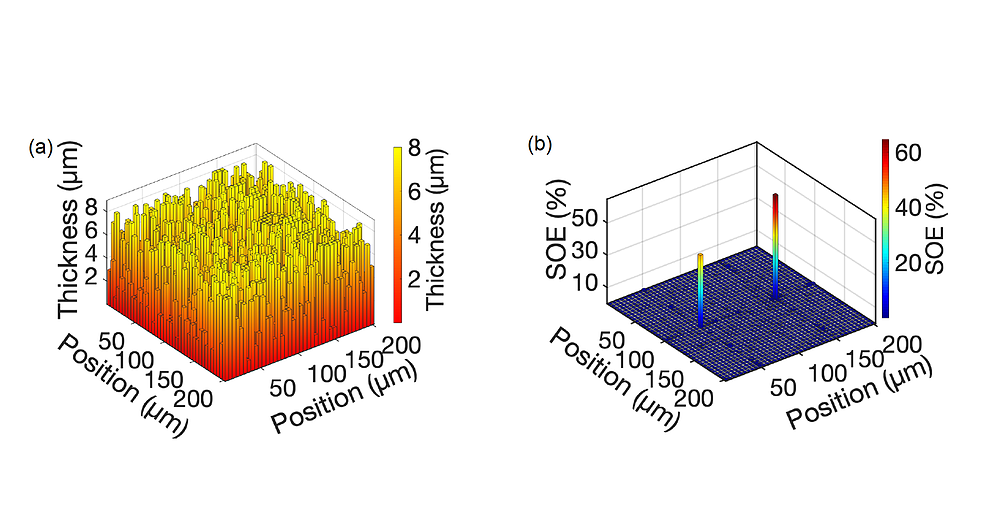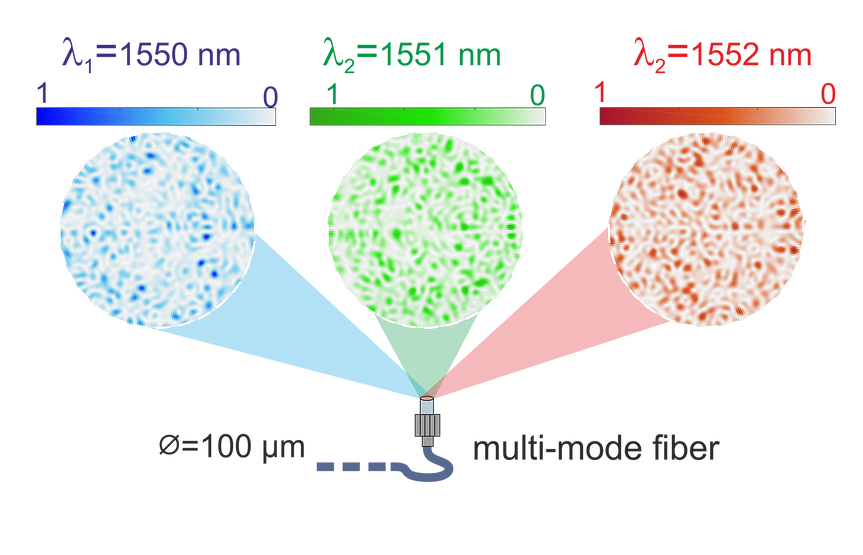Wavefront Shaping
When a light beam passes through a chaotic (or complex) medium it will produce a so-called speckle pattern (upper right image). Knowing the transmission properties of this chaotic medium one can send a shaped wavefront matching these properties and obtain a focused point after the scattering medium (lower right image). We demonstrate wavefront shaping of light using Spatial Light Modulator (SLM) as the wavefront synthesizer and focus light through a multi-mode fiber, which acts similar to scattering medium. We observe that the intensity of the focused light increases by 100 times at the target position we decide on. Our method paves the way to high-resolution imaging techniques that can be used in many practical applications such as microendoscopy. In that regard we explore imaging and advanced sensor technologies.

Deep learning to image through chaos
Image transmission through a multi-mode fiber (MMF) has important applications in telecommunication and biophysics. This method can provide high-quality transmission by using a single MMF rather than a bundle of fibers. However, transmission of an image through a multi-mode fiber creates a random speckle pattern and thus the input information is lost and human eye cannot recognize the transmitted image. The main problem to solve here is to unscramble that information. We address this issue using artificial (ANN) neural networks and reconstruct the relation between input and output images. The schematic of the setup is shown on the left. We successfully reconstruct a given input image from the corresponding speckle patterns with fidelity values that are listed next to the images.

Spectral splitting and concentration of light
The conventional way of filtering different colors is to use color filters which work in broad range. In order to focus light to a target position an additional lens is needed. Instead using a micro-structure spectral filtering and concentration of light can be achieved simultaneosuly. The figure on the left shows such a microsctrure called diffractive optical element. We can design these microstrucures such that when light pass through different frequencies are focused to two distinct target positions that we determine as shown in the figure on the right.

Using chaos to build a spectrometer
Multiple scattering of coherent light fundamentally involves interference and is distinctive for each wavelength. In fact, waves with different wavelength couple to a completely different mode if the spacing between each wavelength is larger. As shown in the figure each wavelength gives rise to a distinct speckle pattern. We use this fundamental feature of multiple interference to develop high resolution spectrometers.
More information will be provided once the project results are published.

3D imaging using coded light
We program light in space to illuminate an object and get images simultaneously. We manage to recover 3D images using this technique. This project is aimed to train by B. Sc. and Ms. Students.


